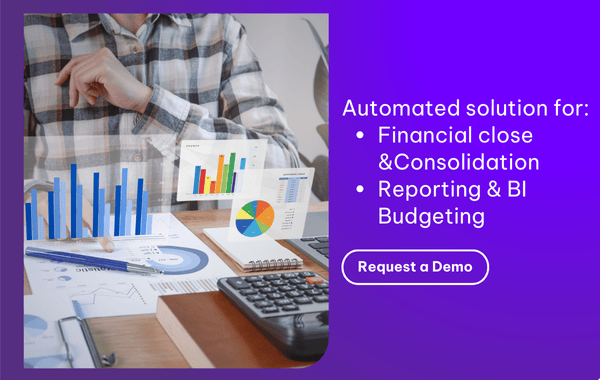Depending on their situation and strategies, companies approach the financial consolidation process in different ways. It is important that businesses thoroughly understand their choices so as to achieve an efficient financial close. The main approaches, some of which may be combined, are discussed below.

Using spreadsheets
The most common approach involves the use of spreadsheets to manually process and consolidate data exported from disparate financial systems.
Its advantages:
- It is the fastest and cheapest solution in the short-term
- Familiar user-interface
Read more: Getting rid of Excel in financial planning and budgeting: modern trend for CFOs
Its disadvantages:
- High chance of administrative errors resulting in inaccuracy of data
- Issues with version control
- More time and money spent on the close in the long run

Using ERP systems
Companies taking this approach want to use the general ledger component of their existing ERP system. For this approach to be viable, businesses need to make minor modifications that allow their current ERP general ledger to be used as the common financial consolidation platform (e.g., standardising on a single vendor’s general ledger).
Its advantages:
- Allows businesses to leverage existing technology
- Does not require staff re-training to use the system
Read more: Single ERP suite vs. multiple best-of-breed systems
Its disadvantages:
- May not work well for bigger companies with multiple ERP systems and charts of accounts
- Limited reporting capabilities
Using specialised tools
This method provides a fast track to consistent financial consolidation and reporting, as companies with disparate systems are integrated through a mapping process. Existing core financial systems and data centres remain intact, and such a tool is also relatively fast to implement with low resource impact.
Its advantages:
- A high level of out-of-the-box functionality
- Flexible reporting capabilities
- Easy integration with other ERP systems
Its disadvantage:
- Choosing the right tool in the somewhat saturated market can be difficult
***
Out of these approaches towards financial consolidation, one has emerged as the best choice to address the challenges associated with achieving a fast close. Find out which it is and why in our full whitepaper “Financial Consolidation: Building a bridge to operational excellence.”
Like what you've read? Click here to subscribe to this blog!
 English
English  Vietnamese
Vietnamese 


